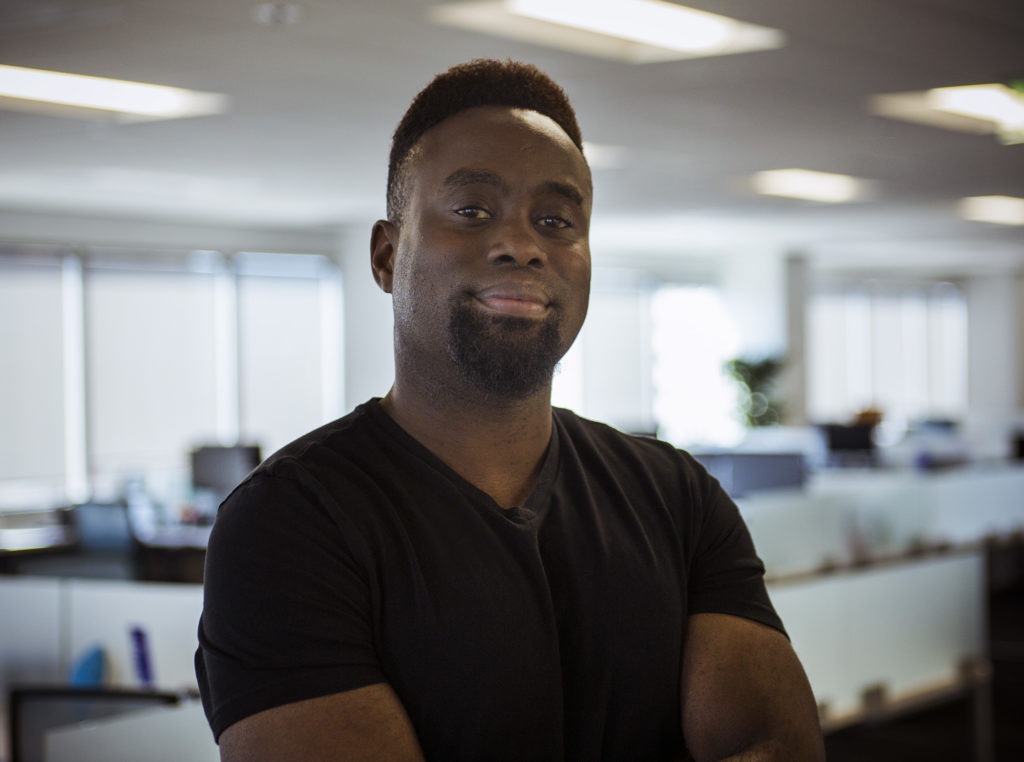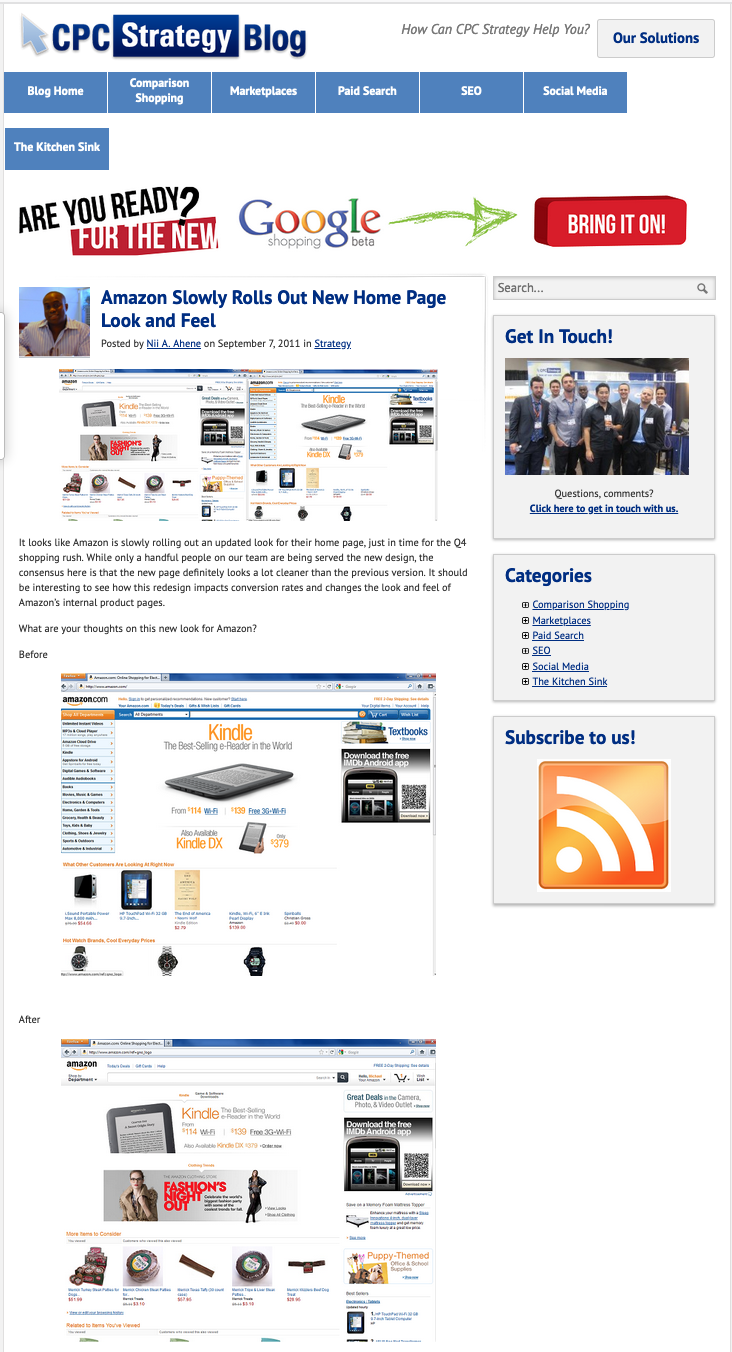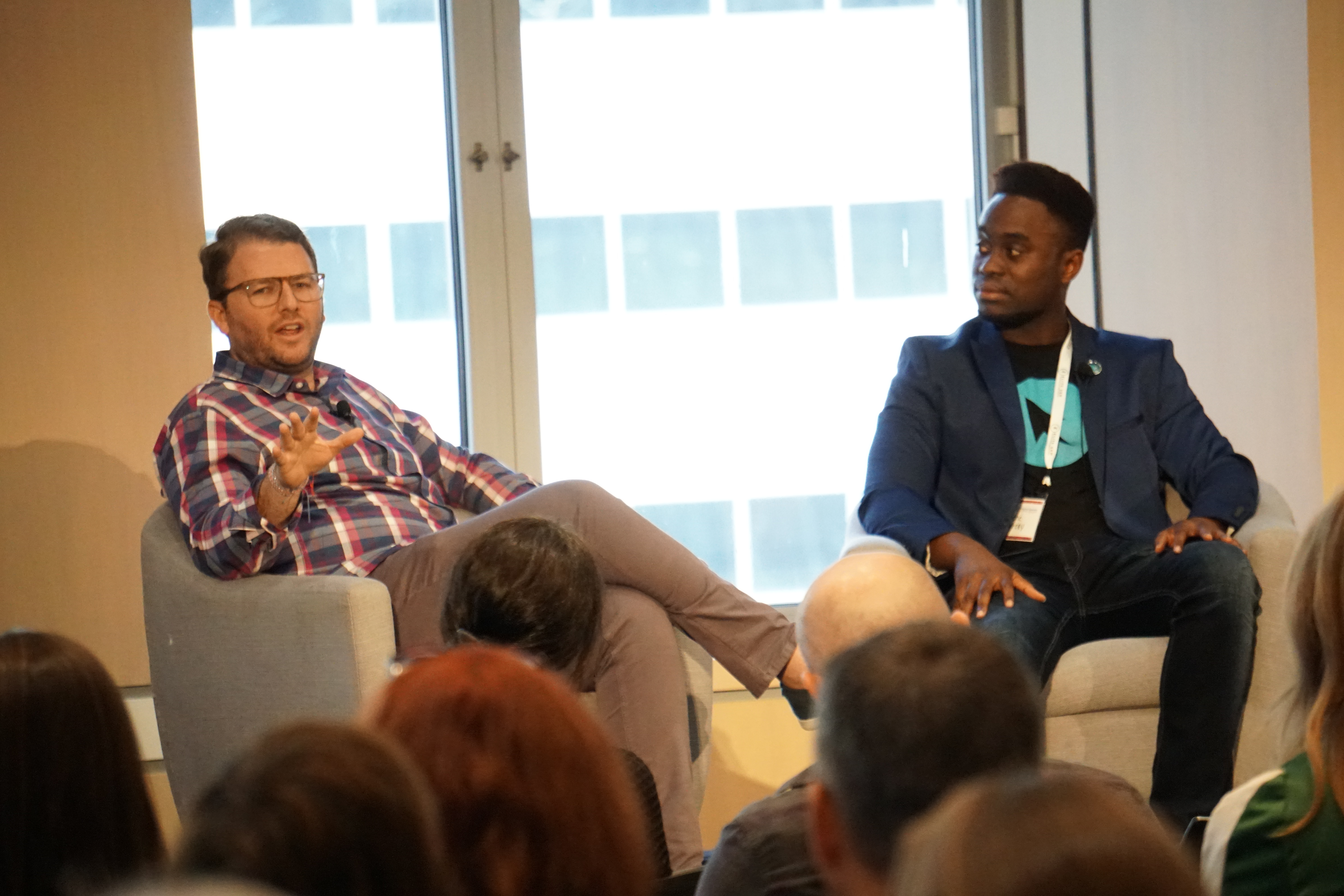For most people, scaling a digital agency in the late 2000s was a fool’s errand. Due to the Great Recession, the economy had tanked and the future looked bleak. But for Nii Ahene and his partners, 2007 turned out to be a perfect time.
Nii was in the midst of a promising new career with eBay. He was content with his first gig right out of UC Berkeley. But he was also curious about entrepreneurship, which he experimented with throughout college.

So six months into his new job, he connected with Rick Backus, an old friend who also worked in eCommerce. They kicked around a few ideas.
At that time, internet shopping was still coming into its own. Nii and Rick thought the space was at a favorable junction of circumstance. It wasn’t long before they found a problem they knew they could fix.
“We were looking at the industry and saw the opportunity that most retailers and eCommerce companies didn’t know how to leverage paid advertising online,” Nii said when we interviewed him for this piece.
What followed was the founding of CPC Strategy (now Tinuiti), a performance-marketing agency focused on data-feed driven advertising. It served a small, but rich market of comparison-shopping companies.
While keeping their day jobs, Nii and Rick laid the groundwork for the agency in its first year. By the start of 2008, they grew enough to bring on two more partners, Tien Nguyen and William Parris.
Over the next decade, CPC Strategy thrived in spite of some early hurdles it had to overcome.
During the heart of the Great Recession, the agency enjoyed year-over-year growth of 50%. And by 2018, CPC Strategy grew from a small group of four founders to a company of 135.
In the agency’s early years, a lean approach protected it from the crash of the market. To keep expenses low, Nii and his partners managed their clients’ campaigns themselves. It was a few years before they hired their first employee.
Meanwhile, it was their content marketing that spearheaded their growth. In this article, you’ll learn how their blogs and webinars earned them industry clout. We’ll cover the creative tactics they used for reaching the right audience, including:
- How they turned their blog into a trusted news source for paid digital advertising.
- How they landed a chance partnership with Google to start hosting webinars.
Why CPC Strategy Doubled Down on Content Marketing
As the world began to emerge from the recession in 2010, Nii and his partners started shifting focus. They began thinking about how they could build CPC Strategy for the long haul. But to do so, they knew they needed to be more strategic about how they generated revenue.
To continue growing, Nii and his partners knew they had to figure out how to generate more leads. So, they started researching what their most effective marketing channels were. They found referrals, cold calls, partnerships, and content brought them the most business.
Their next step? Distinguishing which one of the four deserved most of their attention.
With referrals, Nii and his partners found it hard to create the right incentives for clients. For partnerships, they lacked enough necessary knowledge and experience. And with cold calling? No one enjoyed that approach.
“Cold calls are terrible, right?” Nii said. “Nobody likes cold calling. (They’re) frustrating, whether it’s you as a founder doing it or you’re trying to hire somebody to do it.
“Nobody wants to be a telemarketer,” he added.
But content was a different story. Sure, they had fun creating it. But they also found it was the one channel they could influence the most. It helped that the early returns on leads suggested there was opportunity, too.
The CPC Strategy Playbook for Blogging
Before social media, YouTube, and podcasts, blogs were the internet’s kings of content. In CPC Strategy’s early years, blogging was one of the company’s go-to-channels for marketing.
When the blog first started, Nii and one of his partners served as the main writers. In fact, it would be a few years before anyone else earned a byline. Handling content creation themselves kept its operating expenses low.
Again, the agency’s specialty was in data-feed driven advertising. Niching down in the competitive business of ad strategy provided them an advantage. Few companies could compete with them when it came to creating relevant content.
As a result, Nii and his partners decided to focus writing two specific kinds of posts for their blog:
Industry News
The blog grew in part because it was a valuable source of news. Nii and his partners shared information that visitors couldn’t find anywhere else. For example, they reported on changes to pricing for many of the industry’s top comparison-shopping engines.
“If PriceGrabber changed their rate card from 20 cents a click to 30 cents a click, we would be the first to report it,” Nii said. “If Shopzilla changed their ranking algorithm or their networks that they (served ads on), we were the first to talk about that as a news destination.”
These kinds of posts weren’t long, either. Nii and his partners focused on quality over quantity. Putting out accurate information fast was the most important task.

Unique Data
They also wrote using aggregated data of their entire client roster. With their clients’ permission, they indexed campaign performance. They then wrote reports, ranking comparison-shopping engines based on benchmarks like functionality and price.
Their audience found these reports valuable because they were both rare and unique. The specificity of their content helped CPC Strategy earn authority in the industry.
“If you were interested in comparison shopping, you were coming to us,” Nii said. “In fact, we had a number of people pursuing master’s degrees and PhDs reaching out to us, asking for our raw information because they wanted to do research on what we were doing.”
How CPC Strategy Generated Traffic and Captured Leads
Writing was only one element of CPC Strategy’s blog. Generating traffic and lead capture were the others.
The first order of business for Nii and his partners was generating traffic. To do this, they started on SEO and wrote posts that targeted specific keywords. At the time, ranking on Google wasn’t as competitive. Creating for a very narrow niche also helped.
Public relations was the next tactic Nii and his partners used. There weren’t many reliable sources that offered the kind of data that CPC Strategy had. As a result, it wasn’t hard to get eCommerce journalists and bloggers to bite on their pitches.
Once their site started yielding more traffic, Nii and his partners went to work on lead capture. First, they built squeeze pages to collect emails from their audience. Then, they nurtured those prospects by serving more reports, opinions and breaking news.
“That was really how we got our content game started,” Nii said of blogging.
The CPC Strategy Playbook to Webinars
To this day, few of Nii’s colleagues even know why the agency started hosting webinars. According to him, it all began thanks to a huge industry shift caused by the world’s most-used search engine.
In 2002, Google launched a free comparison shopping site called Google Froogle. This became a valuable promotional channel for every retailer online. For the next decade, Google Froogle drove organic traffic to businesses that participated.
But in late 2012, the free ride came to an end when Google decided to change Froogle into a pay-to-play product. The shift took every retailer by surprise as it seemed to happen overnight.
“Obviously, when you’re taking something away that people are relying on, it causes a lot of dislocation in the industry,” Nii said.
When Google made the change, they gave companies 90 days to prepare. But it turned out that wasn’t enough time to calm the panic that had swept the market. As a result, Google had to search for a solution.
Enter CPC Strategy. By this time, the agency already had the trust of the entire eCommerce industry. So Google reached out to Nii and his co-founders to see if they could help educate the market.
“Our first webinar was really talking about how this paid Google product would work,” Nii said.
How CPC Strategy Conducted Webinars
When it came to hosting webinars, CPC Strategy never followed a standard framework. Instead, it relied on a north star, centered around the goal of education.
To find topics to discuss, they’d take a close look at the industry. Nii and his partners would target any subjects that appeared to have gaps in knowledge.
To fill those holes, their webinars featured subject-matter experts. They ranged from partners like Google or their staff members at CPC Strategy.
Like blogging, webinars became another vehicle for CPC Strategy to show its authority. Through education, the agency continued to build trust with its audience.
“Even if we teach you everything there is, everything we know” Nii began. “There’s always going to be individuals and organizations that don’t have time to be able to do everything to that degree.
“And so based on us demonstrating our capabilities, our knowledge, the goal is for individuals to say, ‘Oh, you know what? These guys have it covered. Let me go ahead and reach out to them to be able to learn this,’” Nii added.
And What About The Competition?
Sharing information of course doesn’t come without risk. After all, they made their webinars public for everyone, including their competitors.
But this didn’t phase Nii and his partners. They understood there was a space between idea and execution that only they could fill.
“The number of competitors that used to come to our webinars was ridiculous,” Nii said. “But, we don’t have a scarcity mindset. I’m okay if our competitors come in because at the end of the day, as long as we continue to stay sharp, we’ll always have the best tactics. And the people who are in the industry, they recognize that.”
Where Nii and His Company Are Today
After more than a decade of business, CPC Strategy’s hard work finally paid off. In 2018, Nii and his partners negotiated a successful sale to Elite SEM . It was highly-regarded as one of the best places to work in the entire ad industry.
After the acquisition of CPC Strategy and others, the company rebranded into Tinuiti in 2019. But even after the sale, Nii suggests that webinars and blogs still remain the bedrock of their content marketing strategy. They’ve only made a few minor adjustments to their tactics.
When it comes to their blog, they create 95% of their content in-house. As CPC Strategy, the agency didn’t rely much on freelancers. As Tinuiti, that remains to be the same.
Tinuiti has a full-time staff of four, dedicated to working on their blog. They have three full-time writers who focus only on drafting original pieces. They dedicated a fourth person who focuses solely on research.
With these four staff members, Tinuiti produces over 150 blog articles a year. The expanded team also creates 50 to 60 industry white papers and webinars too.
Meanwhile, Tinuiti continues to go live with a new webinar every single week. In 2019, it hosted 60 in total. Like its blog, Tinuiti has full-time webinar staff. Their sole responsibilities center only on coordination and outreach.
Take a step back and you’ll realize that teaching is the heart of their content strategy. Lending a helping hand worked then and continues to work today – especially as the world braces for another economic downturn.
“That focus of talking about the industry and providing education is still a cornerstone of our marketing efforts,” Nii said.
Commentary from Devesh and Benji: How to Execute Similar Content Marketing Strategies Yourself
Devesh recorded this video to tie in the content strategies that Nii and CPC Strategy used in their content marketing with what we’ve talked about before on Grow and Convert:
Here are links to the articles discussed in the video:








